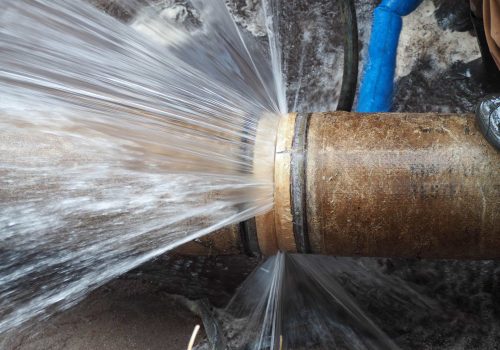Ask the Expert: Your Top Underpinning Questions Answered
Foundation Fixes: Getting Clarity on Basement Underpinning and Its Benefits
Foundation issues can be incredibly confusing and concerning for any homeowner. The moment you notice a crack in your wall or a slight sag in your floor, a flurry of questions can arise: “What’s happening to my home?”, “Is this serious?”, and perhaps most importantly, “What’s the best way to fix it?” Among the various solutions, basement underpinning often comes up, and it’s a significant home improvement that not only addresses structural concerns but also unlocks incredible potential for your home’s lower level.
That’s why we’ve compiled this expert Q&A, addressing the most common and pressing questions about basement underpinning. Our goal is to provide clear, concise, and reliable information to help you, as a homeowner in the Toronto area, make informed decisions about your property’s foundation and its newfound possibilities.
Understanding Underpinning: The Basics
Let’s start with the fundamental questions to lay a solid groundwork.
Q1: What exactly is basement underpinning?
Basement underpinning is a specialized construction process that involves extending your home’s existing foundation deeper to more stable soil or strengthening its current footings. The primary purpose is to provide additional structural support, prevent further settlement, and crucially, to increase the ceiling height of a basement, transforming it into a much more usable and comfortable living space. It differs significantly from simpler foundation repairs like crack injection, which addresses leaks but not structural movement, or piering, which uses external supports rather than extending the existing foundation.
Q2: How do I know if my home needs underpinning?
Recognizing the signs early is crucial. Key warning signs that might indicate a need for basement underpinning include:
- Cracks: Especially diagonal or horizontal cracks in basement walls, exterior brickwork, or interior drywall.
- Uneven Floors: Floors that slope or sag noticeably.
- Sticking Doors and Windows: Doors or windows that are difficult to open or close, or show gaps around their frames.
- Basement Leaks: Persistent water intrusion in the basement.
- Visible Foundation Movement: Any noticeable shifting or settling of the foundation itself. It’s vital to remember that these signs warrant a professional assessment from a qualified foundation expert.
Q3: What causes foundation problems that lead to underpinning?
Several factors can contribute to foundation issues requiring basement underpinning:
- Shifting Soils: Expansive clay soils that swell and shrink with moisture changes, or sandy soils that erode, can cause foundation movement.
- Poor Drainage: Inadequate grading or drainage around your home can lead to water accumulating near the foundation, weakening the soil beneath.
- Inadequate Original Footings: In some older homes, the original foundation may not have been built deep enough to reach stable soil.
- Tree Roots: Large trees too close to the foundation can draw moisture from the soil, causing it to shrink, or their roots can directly exert pressure on the foundation.
The Underpinning Process: What to Expect
Understanding the process can alleviate much of the anxiety associated with basement underpinning.
Q4: What does the underpinning process involve, step-by-step?
While each project is unique, a typical basement underpinning process generally involves:
1. Initial Assessment and Engineering: A structural engineer assesses your foundation, soil conditions, and designs a precise plan.
2. Excavation (in sections): The ground beneath your existing foundation is carefully excavated in controlled sections.
3. Shoring: Temporary supports are put in place to ensure the stability of your home during excavation.
4. Pouring New Concrete: New concrete footings are poured beneath the existing foundation, extending it to the designed depth.
5. Curing and Backfilling: Once the new concrete has cured, the excavated areas are carefully backfilled. This process is repeated section by section until the entire foundation is underpinned.
Q5: How long does a typical underpinning project take?
The duration of a basement underpinning project varies significantly based on factors like the scope of work (how much of the foundation needs underpinning), the depth of the underpinning, soil conditions, and access to the work area. A smaller project might take a few weeks, while a more extensive one could take several months. Your contractor will provide a detailed timeline.
Q6: Do I need to move out during the underpinning process?
In many cases, homeowners can remain in their homes during basement underpinning, especially if the work is confined to the basement. However, it’s important to consider the impact of noise, dust, and limited access to certain areas. For more extensive projects, or if you have specific sensitivities, temporarily relocating might be more comfortable. This is a crucial point to discuss thoroughly with your chosen contractor.
Q7: What about permits and inspections?
For any basement underpinning project in the Toronto area, obtaining the necessary permits from the municipality is an absolute necessity. This ensures that the work adheres to local building codes and safety standards. Throughout the process, municipal inspectors will conduct various checks to ensure compliance, guaranteeing the structural integrity and safety of the completed work. Never proceed with basement underpinning without proper permits.
Costs, Value, and ROI
Understanding the financial aspect is key to seeing basement underpinning as a valuable investment.
Q8: How much does basement underpinning typically cost?
The cost of basement underpinning can vary widely. Factors influencing the final price include the depth of the underpinning, the overall scope of the project (e.g., full basement vs. a section), specific soil conditions, and the accessibility of your property. While it represents a significant investment, it’s crucial to view it as protecting and enhancing your home’s value, rather than just an expense.
Q9: What is the return on investment (ROI) for underpinning?
The ROI for basement underpinning is substantial, both immediately and in the long term:
- Protecting Home Value: It prevents the depreciation of your home’s value due to structural issues, which can be far more costly than the underpinning itself.
- Preventing Future Costly Repairs: By addressing the root cause of foundation problems, you avoid a cascade of expensive repairs to walls, floors, and plumbing down the line.
- Increased Usable Living Space: If the underpinning involves deepening the basement, you gain valuable square footage that can be finished into additional bedrooms, a rental unit, or recreational space. This directly increases your property’s market value, especially in the Toronto area, and significantly expands your home’s functional area.
- Potential Rental Income: A legal, finished basement apartment can provide significant passive income.
Q10: Are there financing options available for underpinning?
Yes, several financing options can help homeowners manage the cost of basement underpinning. These commonly include home equity lines of credit (HELOCs), home equity loans, or specialized renovation loans from financial institutions. Discuss these options with your bank or a financial advisor.
Post-Underpinning: Life with a Stronger Foundation and More Headroom
Once your basement underpinning is complete, a new chapter begins for your home, offering enhanced space and possibilities.
Q11: What are the benefits of a newly underpinned basement?
The benefits are transformative:
- Structural Stability: Your home will have a solid, stable foundation, eliminating worries about settlement.
- Increased Ceiling Height: This is a major advantage. Underpinning allows for significantly higher basement ceilings, transforming what might have felt like a cramped, unusable space into an open, inviting, and truly livable area.
- Dry Space: Underpinning is frequently combined with comprehensive waterproofing, resulting in a dry, healthy basement environment, free from the concerns of moisture and mold.
- Opportunities for Finishing: With a stable, dry, and taller space, your basement becomes ripe for finishing into new living areas, greatly enhancing your home’s functionality and value. The added headroom makes it feel like an extension of your main living space, not just a basement.
Q12: Can I finish my basement immediately after underpinning?
While the structural work is complete, it’s generally recommended to allow sufficient curing time for the new concrete before proceeding with extensive finishing. Furthermore, it’s crucial to ensure any necessary post-project waterproofing measures are in place and effective to protect your newly stable space from moisture. Your contractor will advise on the appropriate timeline.
Q13: What kind of warranty or guarantee should I expect?
A reputable basement underpinning specialist will provide a comprehensive warranty on their work and the materials used. This typically covers the structural integrity of the underpinning for a significant period, often transferable. Always ensure you understand the terms and conditions of any warranty offered.
Q14: How can I maintain my foundation after underpinning to prevent future issues?
Even after basement underpinning, good maintenance practices are essential:
- Proper Drainage: Ensure your eavestroughs and downspouts direct water away from your foundation.
- Grading: Maintain positive grading around your home, sloping away from the foundation.
- Regular Inspections: Periodically inspect your foundation for any new signs of concern.
- Tree Management: Be mindful of large trees near your foundation and consider professional advice on root barriers or selective pruning.
Choosing the Right Professional
The success and safety of your basement underpinning project hinge on selecting the right experts.
Q15: What qualifications should I look for in an underpinning contractor?
When choosing a contractor for basement underpinning in the Toronto area, look for:
- Licensing and Insurance: Essential for your protection and peace of mind.
- Extensive Experience: Specifically in underpinning projects, not just general renovations.
- Strong References: Ask for and check references from previous clients.
- Engineering Expertise: Ensure they work with or have in-house structural engineers to design the solution.
- Transparent Communication: A contractor who clearly explains the process, costs, and timelines.
Q16: Why is it crucial to hire an experienced underpinning specialist?
Basement underpinning is a highly technical and complex undertaking. Hiring an experienced specialist is crucial for:
- Safety: Improper underpinning can compromise your home’s entire structure.
- Structural Integrity: Ensuring the work is done correctly for long-term stability.
- Long-Term Effectiveness: An experienced team will implement solutions that last.
- Avoiding Costly Mistakes: Inexperienced contractors can make errors that lead to significant, expensive rework down the line.
Basement underpinning is a complex but ultimately highly rewarding investment in your home. It’s about securing its future, enhancing its value, and transforming previously underutilized space into something truly functional and beautiful, thanks to the added headroom and stability.
Don’t let uncertainty or fear deter you from protecting your most valuable asset. Armed with this knowledge, you can approach your foundation project with confidence. If you suspect your home needs basement underpinning or have any remaining questions specific to your property in the Toronto area, we encourage you to contact a qualified foundation expert for a personalized assessment. Take the first step towards a stronger, more valuable home today!




